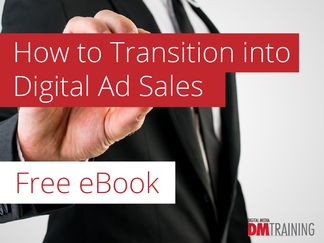7 Strategies for Selling Search Engine Marketing
1. Start with a Great Target List
If you observe veteran search marketing salespeople, you will see that they receive inbound calls and email inquiries quite frequently from potentially ready-to-buy advertisers. Unfortunately, half of the calls will be less than optimal and shouldn’t be considered real prospects, but the other half will be first class opportunities.
Watching those veteran sellers, you may wonder what sort of magic makes them so effective. What is the real magic? The seller and his/her company have been prospecting for years.
The odds of cold calling someone today and reaching the final decision maker is low. But you can sow the seeds today- make sure they already know about you, and make them impressed enough to remember to contact you when they are ready.
So if you want a successful career, think ahead to the advertisers you want to be working within the next 1-3 years and begin pursuing them, without appearing desperate. Each day, given that you will have to make about 10-30 calls (especially if you are in your first year of SEM sales), you should be having at least one good conversation with a decision maker/advertiser.

2. Prospect Every Day
Although this seems obvious, especially given the point mentioned above, it can sometimes be difficult to carry it through. Since you sometimes actually reach an interested advertiser, you lose some prospecting time.
The "interested" calls can easily go on for about 10-45 minutes. Those calls often result in the promise to send something. That something can take an hour to 3 days to prepare. Managing your time so that, despite these needs, you still find time to prospect enough, ideally, you should aim for a call to be only a few minutes long that results in a face-to-face meeting.
3. Prepare for Each Meeting Like an Investor
Before investors will put their money into a company, they want to know everything about that company. Therefore, apart from the information you will glean online and from various databases, etc., you need to make sure you understand how big the vertical is, how big a share your target-prospect has and what their plans (ideally budget) and timing needs are to grow that share.
This level of information can only be acquired through conversations with the prospect. You may even need more than one good conversation before you can learn enough about this advertiser.
Remember, you are also trying to determine if this advertiser is a good fit with your own agency. Given your competition, you may never get a second chance at getting that advertiser back.
4. Create a Presentation that Tells Your Agency's Story
The normal flow of events leading to a sale with a new advertiser goes either through the RFP process or through a process led by the search agency. The RFP process gives the customer total control while the other gives the agency total control.
Either way, you are likely to need two presentations. The first is either the RFP response or your agency's initial presentation; the second will include the agency fee structure.
If you are involved with an RFP, you will likely be presented with a variety of categories (for example Proprietary Technologies, Bid Management Strategy, Service Team Structures, etc.) with a series of detailed questions below each. Your answers should tell a story about how your agency services accounts.
If the sale is outside the RFP process, then the focus still needs to be on telling that story: the story of how your agency's philosophy of servicing accounts is a superior fit for that particular advertiser.
5. Create a Sense of Urgency
Assuming the advertiser is trying to improve the ROI of their search campaign, the seller needs to be specific about the advertiser's timing for those changes. Even if the advertiser's goal is to increase their SOV of search traffic (and conversions) to their vertical by the following year, the good search seller will be able to build up a sense of urgency in the client.
How does one do this?
By building a backward timetable.
Let's say it's currently January, and the advertiser wants to take advantage of the Q4 traffic increase. By describing each and every step leading up to October/November/December along with the amount of time needed to test and optimize each step (including keywords selection, creatives, matching strategy, landing page, etc), you can easily show the advertiser that starting in January may not even be enough.
6. Involve Your Team of Experts Pre-Sale - Without Wasting Their Time
If the seller is the smartest person in their agency, then the advertiser will suffer having to work with a not-as-smart service team. On the other hand, if the service team is a bunch of rocket scientists that the advertiser never meets, then the advertiser may have trouble visualizing the benefits of working with them.
Make sure you as a seller appear well-informed, but then top yourself by introducing the advertiser to at least one additional member of either the management or the service team - ideally both. Consider the introductions of other team members a great "next step strategy."
7. Stay Involved While Handing Off Campaign to Your Account Management Team
Some agencies ask their sellers to stay involved after the sale - some even insist that the seller joins weekly Account Manager calls. Other agencies ask that the seller cleanly hands off the advertiser, turning to focus on the next sale.
Either way, the seller is well advised to make sure they schedule a conversation (or 2, 3 or 4) during the first week/month of the new advertiser's campaign with both the Account Manager and the client. The last thing a search seller wants is to learn - too late - that the advertiser was unhappy and unable to get resolution through the account team.
About Steve Bookbinder
Steve Bookbinder is the CEO and sales expert at DMTraining. He has delivered more than 5,000 workshops and speeches to clients all over the world and has trained, coached, and managed more than 50,000 salespeople and managers. Steve continuously refreshes his training content to reflect his latest first-hand observations of salespeople across industries and regions. Through him, participants in his workshops and coaching sessions learn the best practices of today’s most successful sellers and managers across industries. Steve understands that sales is a competitive game. To outperform competitors and our own personal best results, we need to out-prospect, out-qualify, out-present and out-negotiate everyone else, not merely know how to sell. Through his specialty programs in Pipeline Management, Personal Marketing, Great First Meetings, 2nd-level Questioning, Sales Negotiating, and Sales Coaching, Steve trains sales teams to master the skills they need to overcome the challenges they face in today’s world… and keep improving results year over year.





